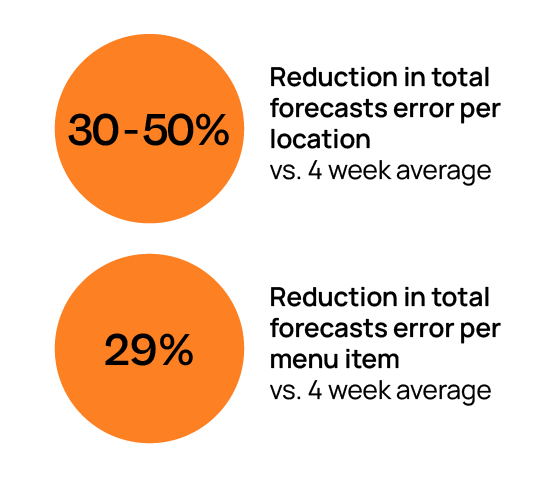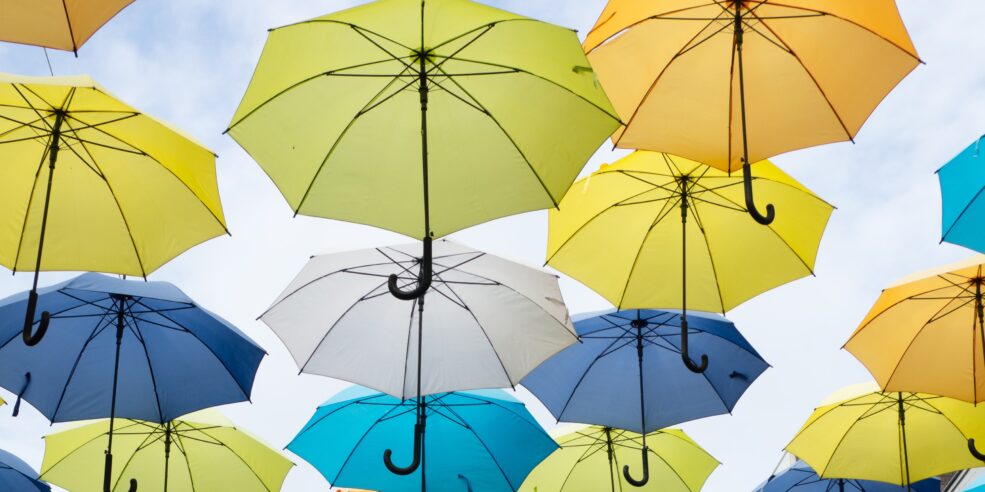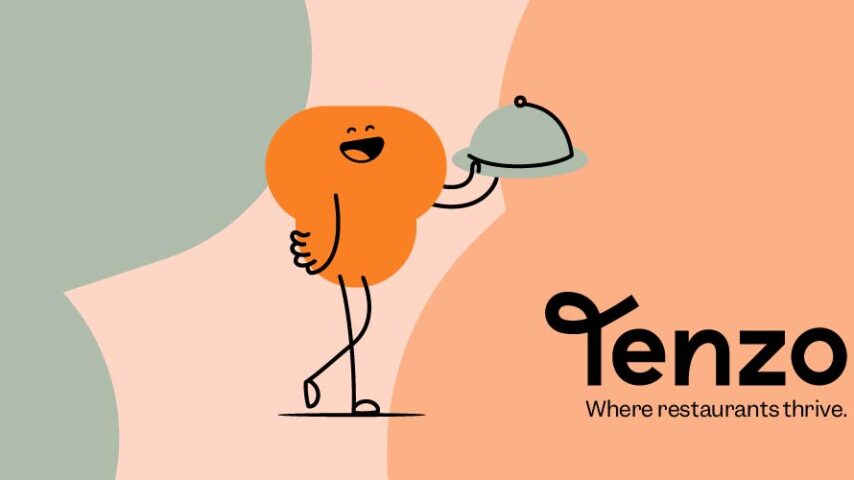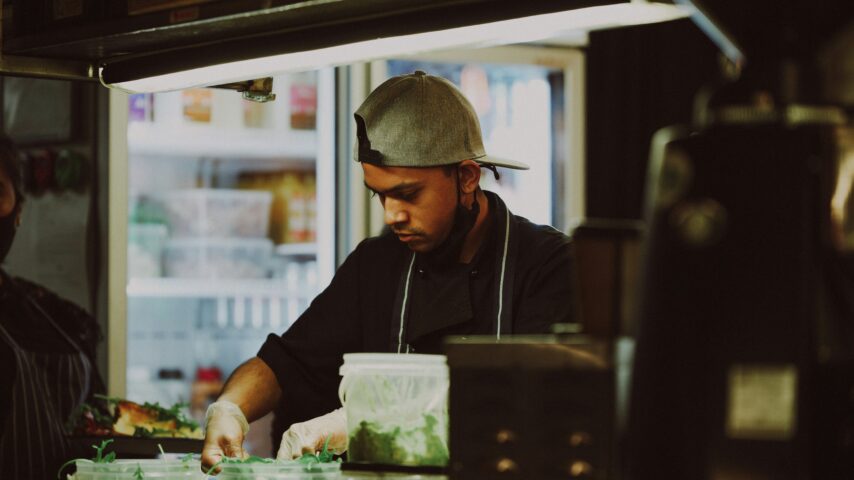In this article
- Why improve your restaurant sales forecasting methods?
- What is restaurant forecasting?
- Rolling four-week-average sales forecasting technique
- What is a rolling four-week average?
- Adjusting your basic four-week average
- Taking weather and the seasons into account
- Other factors to consider
- When is the best time for your restaurant to implement forecasting?
- Where should forecasting be implemented?
- When should forecasting be implemented?
- Who should have access to forecasting data?
- So how does Tenzo's AI sales forecasting work?
- Exactly how accurate are Tenzo's forecasts?
- Benefits of a Tenzo forecast
- Better labour schedules
- Efficient inventory ordering and prepping
- Conclusion
This post will run you through everything you need to know in order to forecast your sales more accurately than 90% of other restaurants.
The guide includes:
- The reasons you should improve your forecasting accuracy.
- Sales forecasting techniques including a four-week rolling average.
- How to adjust that forecast and improve accuracy.
- How to create a forecasting model in your business: when, where, and who?
- How Tenzo creates hyper-accurate forecasts using machine-learning to give you the best restaurant sales forecasting tool.
Let’s jump in with the reasons to care…
Why improve your restaurant sales forecasting methods?
When it comes to predicting sales, restaurateurs may be tempted to rely on a crystal ball to tell them what’s what. But when scrying doesn’t work and you end up with an inaccurate forecast, the results can be extremely damaging in an industry of very narrow-margins.
Inaccurate forecasts can lead to:
- Understaffing resulting in negative reviews (understaffing is the #1 cause of negative reviews)
- Overstaffing, and wasting money on staff who don’t need to be there.
- Staff being sent home early or called in on their day off
- Increased employee turnover
- Over-ordering stock creating increased food waste
- Over-prepping, a waste of both food and time.
- Running out of key menu items, making customers unhappy
Forecasting is invaluable for restaurants. Without a good estimate of sales to be made, stocking and prepping inventory and scheduling staff becomes a real nightmare. Adequate staffing levels usually equals happy customers who write good reviews and leave excellent ratings – the returning customers, great reviews, and word of mouth are the foundations of a successful business.
Of course, talented and experienced GMs who know their restaurant like the back of their hand are able to forecast to a certain degree of accuracy.
However, extremely accurate restaurant sales forecasting is often assumed to be near-impossible and the inability to foresee sales in advance can occasionally unravel the most buttoned-up general manager. But have no fear! There is a way to predict your sales without resorting to fortune-telling, and we’re here to tell you how.
What is restaurant forecasting?
Traditional restaurant sales forecasting involves looking at past sales and predicting future sales based on the information collected. Once you have an idea of a sales forecast for a certain day of the week, you are able to plan all of your variable costs around it. These include inventory ordering, food prep and staff scheduling.
Tenzo automatically creates these sales forecasts for our customers using machine learning. However, there is an analogue method of creating a restaurant forecast if the AI version sounds too Black Mirror. The most common way of doing this is referred to as a rolling four-week average.
Rolling four-week-average sales forecasting technique
What is a rolling four-week average?
By taking data from the last four weeks (or three or five weeks, but four is most common), you are able to create a 4-week average that can give you an idea of sales for the upcoming week. Your forecast for Monday, for example, would be the average sales for the past 4 Mondays. Simple as that.
Adjusting your basic four-week average

Of course, it is important to take into account any abnormalities in the data, such as events or holidays that might skew your sales forecast, and adjust your projections accordingly. Bank holidays, for example, may increase your sales on certain Mondays or half-term may result in an amazing week for sales.
Be careful to remove any bank holidays or other exceptional days from your 4-week average when forecasting ahead. If these inflated sales figures are included when calculating the next forecast, you will overestimate your next week’s sales and over-order inventory or schedule too many staff. Your four-week average should be an average of the last four “ordinary” weeks to ensure an accurate baseline.
Taking weather and the seasons into account
Weather can also have a huge effect on restaurant forecasts. Many restaurants, for example, report that when snow is on the horizon, the number of cancelled reservations seriously increases, and vice versa when fair weather is expected. So knowing how certain weather conditions affect your restaurant can be invaluable when creating your forecast, and something to definitely keep in mind.
Bear in mind that weather forecasts are only accurate in the short term, so keep an eye on the forecast to see if your staff schedule needs any last-minute amendments.
Additionally, seasonal changes can also affect how accurate your sales predictions are. The rollover into winter, for example, may see more evening visits and hot drink sales that could bump up overall revenue. If this is the case for your restaurant, it can be helpful to look at past sales patterns for that time of the year so you can apply that knowledge to your forecasts.
Other factors to consider
Furthermore, events going on nearby can also increase footfall to restaurants, whether that’s a concert, a sporting event or even a pop-up shop that has generated more interest in your area. Food is always a high priority whenever large groups of people congregate, so knowing to expect more traffic is key to capitalising on the rise in customers.
Another important thing to consider is your own promotions. When you run a promotional campaign your footfall will hopefully rise. You’ll need more staff and inventory to keep up with higher customer demand but you’ll need to make sure that higher labour and food costs don’t eat into profits. These aspects of the promotion need to be considered carefully beforehand so that you’re sure not to run out of stock or have too few people working.

Most importantly, you know your restaurant best – if you know that certain occurrences affect sales, then there should be an allowance for these in your forecast. This is where gut-feeling comes most into play and experience is key. A seasoned GM should be able to make adjustments almost instinctively to a rolling-average baseline.
When is the best time for your restaurant to implement forecasting?
Where should forecasting be implemented?
Every restaurant should have some idea of the sales they will make on any given day. When first starting off, this may have to be ‘gut’ driven but as soon as you have reliable historical data built up, you can somewhat accurately start predicting sales manually.
When should forecasting be implemented?
When you’ve just opened your first restaurant, forecasting is extremely difficult as you haven’t got a data store to pull from. This is a time of trial and error, but as soon as you’ve gathered enough data, you should be forecasting.
Tenzo’s AI engine can start forecasting reasonably accurately with a mere ninety days of data, but is most accurate with access to two year’s worth of data, as key factors such as seasonality and annual event trends can be identified and applied.
Who should have access to forecasting data?
For larger operations, head office should have access to restaurant forecasts to ensure that GMs are accurately scheduling labour and ordering/prepping ingredients.They will also want to know what the overall sales forecast is for the entire business to make sure it aligns with financial plans.
But it’s the GMs who need the information most so they can successfully staff their locations and order in the right amount of inventory. Having access to an accurate forecast allows them to make last minute changes that increase profitability overall, such as sending a staff member home early or creating a special to offload stock that would go off before being ordered.
The GMs are the people on the ground and most likely to know if some kind of disruption to service will be caused – whether by an event, unforeseen weather or building work on the road outside. A key feature of Tenzo’s AI sales forecasts is the capability for GMs to make adjustments to our extremely accurate baseline based on their own knowledge and expertise.
So how does Tenzo’s AI sales forecasting work?
Machine-learning allows Tenzo to take into account many more factors and millions of more data points when building a forecast than a human forecaster could.
- Step 1: Tenzo amasses your entire historical sales data and with that is able to build a fairly accurate baseline, far better than a four week average (and we’re only at step 1!). This baseline incorporates your overall growth trend, as well as daily, weekly, monthly, and seasonal patterns.
- Step 2: Secondly, Tenzo uses our AI forecasting engine to understand how historical weather and events such as Christmas, Valentine’s day, and other holidays, have impacted your business.
- Step 3: Armed with a full understanding of how past events have affected sales performance, the algorithm can forecast future sales based on what it has learnt. The final layer of data needed is the weather forecast and a detailed schedule of forthcoming events.
- Step 4: Our forecasts are delivered to GMs 1-2 weeks before the date, giving them plenty of time to prepare. They are updated in real-time if the weather forecasts change. GMs can also make adjustments to the forecasts based on things that only they know – this combination of human intuition and machine baseline is by far the most accurate approach available today.
Exactly how accurate are Tenzo’s forecasts?
Tenzo’s forecasts typically reduce forecasting error by 30-50% as compared to traditional four-week averages.
With the ability to process so much data, Tenzo can also achieve the holy-grail of forecasting: item-level forecasts. This means forecasts of how many of a specific menu-item a store will sell.
When it comes to individual item forecasting, Tenzo reduces forecasting errors by 29%. Used well, this can mean a huge reduction in overall food waste.
Moreover, Tenzo doesn’t just give you a general forecast for the day like a four-week average would, but instead forecasts each hour-long interval. This allows restaurateurs to schedule the right amount of staff for the exact shift-times that they are most needed for.
Using machine learning and an accurate baseline, Tenzo can give you an accurate forecast up to 21 days in advance, taking into account historical data, weather patterns, holidays and custom events.

Benefits of a Tenzo forecast
Better labour schedules
Tenzo’s accurate forecasting allows restaurateurs to make decisions that are backed up by data. This means that when they schedule in staff for the coming week, they are much more likely to have the right amount of people working.
And when staff numbers are right, many benefits to your business follow. Staff can put all of their efforts into pleasing customers, generating good reviews for your business. Plus, having a well-oiled staff plan reduces workplace stress, therefore increasing staff retention levels. In an industry where turnover is so high, this can be a major competitive advantage.
When you’re able to match your labour force to predicted sales with an AI forecasting tool like Tenzo, you can reduce your overall labour bills. In fact, Tenzo users have seen a 5-10% reduction in labour costs.
Efficient inventory ordering and prepping
Beyond labour, an accurate forecast means more accurate inventory ordering. Many restaurants rely on the previous week’s sales when reordering inventory without considering external forces that may change demand. For example, is the sun coming out after weeks of rain? Your lighter meals and drinks may be more popular than the heavier comfort foods that people gravitate to when it’s grey outside.
When you have an AI forecast that warns you about changing conditions, less inventory will be thrown away. And with food waste contributing so negatively to the environment, this is something we should all be thinking about. Plus, less waste means a reduction in cost of goods sold. A Tenzo customer can expect their COGS to be reduced by anywhere from 2 to 8%.
General Managers will find that Tenzo takes the guesswork out of their job, allowing them to solve problems before they even come to fruition. They are better equipped to handle their budgets in the most efficient manner, saving money in the short and long term. And fewer surprises day to day means that everything can be planned in advance and checked over, leaving less room for costly human error.
Conclusion
Implementing a solid forecasting process in your business will give you a major competitive advantage – in our professional experience, very few restaurant business have good forecasting processes (even the big boys).
Forecasting itself makes the life of the restaurateur a little less frenetic, but using a tool like Tenzo? Life is positively peachy. Tenzo takes the stress out of decision-making because you know that all recommendations are backed up by cold hard data. Still not convinced? Request a demo now!




